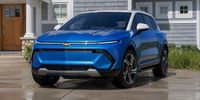The electric vehicle (EV) industry is in the midst of a seismic shift, with new regulations, political wrangling, and market forces converging to reshape the global landscape. Nowhere is this more evident than in China, the world’s largest auto market, where a sweeping new law will soon upend how plug-in hybrid electric vehicles (PHEVs) are built, sold, and exported. At the same time, U.S. automakers are facing their own challenges, as federal tax credits expire and leasing strategies come under political fire. Meanwhile, battery makers and established EV brands like Tesla are feeling the heat from both regulatory changes and fierce competition.
Starting January 1, 2026, all PHEVs exported from China must deliver at least 100 kilometers of battery-only range, according to a report by Automotive News. This bold move is part of China’s evolving New Energy Vehicle (NEV) strategy, which aims to shift the industry’s focus from sheer volume to technological prowess. The new rule is a direct response to mounting trade barriers, such as the European Union’s tariffs on Chinese battery-electric vehicles (BEVs), and it signals Beijing’s intent to raise the bar for automakers around the world.
China’s PHEV exports have been booming, with a 190% year-on-year increase in 2024 and another 127% jump by May 2025, according to Reuters. Shipments to the EU alone skyrocketed nearly 600%, thanks in part to tariff advantages. In 2024, China exported 6.41 million vehicles, generating about $117.4 billion in revenue. However, with the new standards, export volumes are expected to ease slightly in 2025 to between 5.8 and 6.2 million units, as the country pivots toward higher-end models.
For consumers and automakers alike, the implications are significant. Short-range plug-in hybrids—often capable of only 50 kilometers or less on battery power—will soon be obsolete. One industry analyst told Automotive News, “Manufacturers won’t bother making outdated, short-range hybrids just for smaller markets.” Instead, automakers are now doubling down on extended-range electric vehicles (EREVs), which run primarily on electric power but retain a small gasoline engine for backup. Brands like Zeekr and Xpeng are already producing PHEVs and EREVs boasting 300 to 400+ kilometers of electric range, with charging speeds leaping from 50kW to as high as 500kW.
China’s domestic market, which sees 32 million annual vehicle sales, is also feeling the effects. In major cities, only EVs, PHEVs, and EREVs qualify for new car registrations or number plates. The 100km rule is a natural filter, ensuring that only long-range hybrids are considered future-proof. New fuel economy standards are making combustion engines inside PHEVs more efficient, with the result that most owners will drive in full-electric mode for everyday trips—making these hybrids behave almost like pure EVs, but without the dreaded range anxiety.
Industry experts are calling the law a “game-changer.” As one insider put it, “This policy marks the end of the low-range plug-in era.” Market analysts expect a massive shift toward long-range hybrids within months of the rule’s implementation, creating new benchmarks for performance, efficiency, and export competitiveness. The 100km rule isn’t just a technical regulation—it’s a strategic pivot that will force global automakers to upgrade, innovate, or risk being left behind. By 2026, short-range plug-in hybrids will be a thing of the past, and the next wave of electrified vehicles will almost certainly carry a “Made in China” label.
While China is raising the bar, U.S. automakers are facing a different kind of disruption. Ford and General Motors both recently canceled electric vehicle leasing programs that would have extended the benefit of a $7,500 federal tax credit, following criticism from Republican senators who accused the companies of exploiting a “loophole.” According to Detroit Free Press, GM ended its program on October 8, 2025, and Ford followed the next day, after Senators Bernie Moreno of Ohio and John Barrasso of Wyoming sent a letter to the Treasury Department alleging that the carmakers were using technicalities to claim the credit on vehicles not yet leased to customers.
The senators wrote, “This guidance, while well intentioned, is unfortunately being taken advantage of by certain car companies who wish to continue bilking the U.S. taxpayer.” Both automakers initially defended the programs, arguing that they were designed to keep lease payments affordable after the loss of the credit—a key tool for boosting EV adoption. Ford had even offered a $1,000 dealer incentive for each qualifying EV lease completed by the end of the year. But after the senators’ letter and subsequent outreach to the Treasury Department, both companies quickly reversed course.
GM spokespersons told Detroit Free Press, “We’ve decided not to move forward with the program as initially structured.” Ford, for its part, said it would maintain discounted EV lease payments but would not claim the federal incentive. “Ford will not claim the EV tax credit but will maintain the competitive lease payments we have in the market today to continue providing customers with more affordable electric vehicle options,” said Ford spokesperson Said Deep. The abrupt collapse of both programs highlights the political sensitivity around federal EV incentives and the growing scrutiny of how automakers apply them. For consumers, it could mean higher lease payments heading into the final months of 2025, just as EV sales growth has slowed and inventories are rising.
Battery makers are also feeling the ripple effects. South Korea’s LG Energy Solution (LGES), which supplies batteries to General Motors and Tesla, reported a 34% rise in third-quarter 2025 operating profit to 601 billion won ($420 million), according to Reuters. This surge was largely driven by U.S. consumers rushing to buy EVs before the federal tax credit expired. The company’s profit beat analyst expectations and was boosted by U.S. battery manufacturing incentives under the Inflation Reduction Act. However, LGES warned of a potential slowdown in EV demand by early next year, as tax credits disappear and U.S. import tariffs—imposed by the Trump administration—take their toll.
LGES has been working to offset sluggish EV demand by ramping up production of batteries for energy storage systems (ESS), and it recently signed a $4.3 billion deal to supply Tesla with ESS batteries. But not everything has gone smoothly: construction at its joint battery factory with Hyundai in the U.S. was suspended in September after an immigration raid led to the arrest of hundreds of South Korean workers. The factory’s startup is now delayed by two to three months, but LGES plans to gradually resume business trips for its employees and subcontractors after an agreement with the U.S. government allowed South Koreans to work on equipment at U.S. sites under existing temporary visas.
Meanwhile, Tesla itself is grappling with a shifting market. According to Electrek, Tesla’s third-quarter 2025 deliveries in China fell by 8% compared to the same period in 2024, resulting in a 6.4% year-over-year decline through September. This comes despite Tesla launching its Model YL in China and offering 0% financing—representing customer savings of roughly $1,500 to $2,500—through the end of 2025. China’s EV market is the world’s largest, with nearly half of all cars sold being electric, but competition is fierce from brands like BYD and Nio.
Tesla’s sales woes aren’t limited to China. In Europe, the company sold 23% fewer cars in August 2025 than in August 2024, with sales in Germany and the UK dropping by more than 50%. In the U.S., Tesla’s EV market share fell to 38% in August—its lowest in eight years—even as overall EV sales hit new highs. The takeaway? Tesla is losing market share to increased competition, but the broader EV market continues to grow as more consumers make the switch from gas-powered vehicles.
The global EV industry is at a crossroads, buffeted by new rules, political battles, and technological leaps. For automakers, battery suppliers, and consumers alike, the coming years promise even more upheaval—and opportunity—as the race to electrify the world’s roads accelerates.





